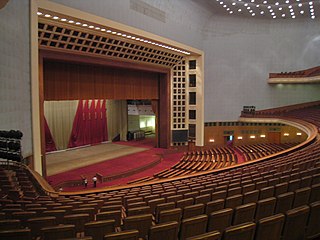Contents
- Incumbents
- Governors
- Events
- January
- February
- April
- May
- July
- October
- November
- December
- Full date unknown
- Births
- Deaths
- See also
- References
| |||||
| Decades: | |||||
|---|---|---|---|---|---|
| See also: | Other events of 1999 History of China • Timeline • Years | ||||
| |||||
| Decades: | |||||
|---|---|---|---|---|---|
| See also: | Other events of 1999 History of China • Timeline • Years | ||||

Qian Qichen was a Chinese diplomat and politician. He served as Chinese Communist Party (CCP) Politburo member from 1992 to 2002, China's Foreign Minister from April 1988 to March 1998, and as Vice Premier from March 1993 to March 2003. Since then, no other diplomat-turned-politician has attained such a lofty status in China's political hierarchy. Qian played a critical role in shaping China's foreign policy during CCP general secretary Jiang Zemin's administration, and was a key player handling the return to Chinese sovereignty of Hong Kong and Macau. He was in charge of border negotiations with the Soviet Union in the 1980s, resulting in a successful settlement of the border dispute and the thawing of the relations between China and Russia. He was also instrumental in handling China's normalization of relations with the West in the difficult period after the Tiananmen Square protests of 1989.
The term Tsinghua clique refers to a group of Chinese Communist Party (CCP) politicians that have graduated or have taught at Tsinghua University. They are members of the fourth generation of Chinese leadership, and are purported to hold powerful reformist ideas. Just like their predecessors, they attach great importance to socialism with Chinese characteristics. Their ascendance to power is likely to have begun in 2008 at the CCP's 17th National Congress.

The 17th National Congress of the Chinese Communist Party was held in Beijing, China, at the Great Hall of the People from 15 to 21 October 2007. Congress marked a significant shift in the political direction of the country as CCP General Secretary Hu Jintao solidified his position of leadership. Hu's signature policy doctrine, the Scientific Development Concept, which aimed to create a "Socialist Harmonious Society" through egalitarian wealth distribution and concern for the country's less well-off, was enshrined into the Party Constitution. It was succeeded by the 18th National Congress of the Chinese Communist Party.
The 15th Central Committee of the Chinese Communist Party was in session from 1997 to 2002. The 14th Central Committee preceded it. It was followed by the 16th Central Committee of the Chinese Communist Party. This was the first Central Committee that current CCP general secretary Xi Jinping was elected to, as an alternative member.
Events in the year 1989 in the People's Republic of China.
Events in the year 2005 in China.
Events in the year 2003 in China.
Events in the year 2002 in China.
Events in the year 2001 in China.
The following lists events that happened during 2000 in China.
Events in the year 1960 in the People's Republic of China.
Events in the year 2012 in China.
The following lists events from 1992 in China.
The following lists events from 1993 in China.
The following lists events from 1994 in China.
The following lists events from 1996 in China.
The following lists events in the year 1998 in China.
The following lists events in the year 1997 in China.
The following lists events in the year 1991 in China.
The following lists events in the year 1990 in China.